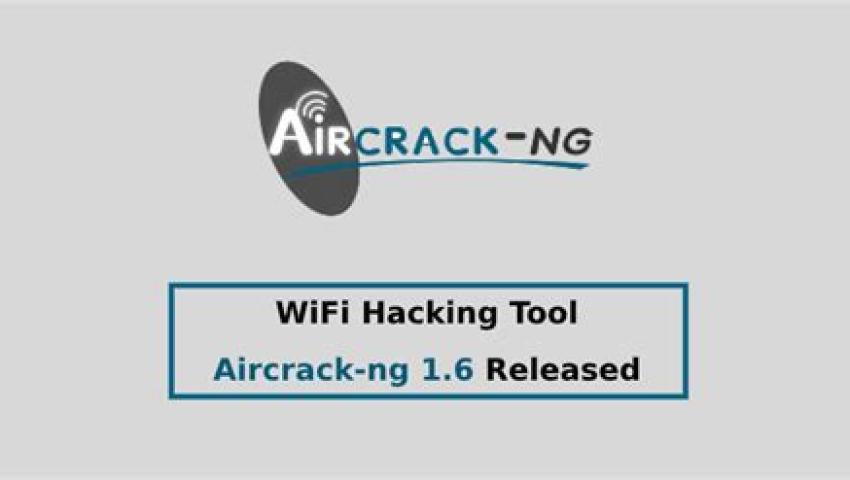
What Is Aircrack-ng? How to Use It for Wireless Network Auditing
Aircrack-ng is a suite of tools for wireless network auditing, penetration testing, and security assessment. It primarily focuses on the analysis and cracking of wireless encryption protocols, including WEP (Wired Equivalent Privacy) and WPA (Wi-Fi Protected Access)...
Wireless networks are an essential part of modern infrastructure, offering connectivity and convenience. However, their open nature makes them vulnerable to various security threats, including unauthorized access, eavesdropping, and data theft. To protect against these threats, it is crucial to regularly audit and assess the security of wireless networks. Aircrack-ng is one of the most widely used tools for wireless network auditing, designed to test the security of Wi-Fi networks and crack WEP and WPA-PSK keys.
In this article, we will dive deep into Aircrack-ng, its features, and provide a step-by-step guide on how to use it for wireless network auditing.
What is Aircrack-ng?
Aircrack-ng is a suite of tools for wireless network auditing, penetration testing, and security assessment. It primarily focuses on the analysis and cracking of wireless encryption protocols, including WEP (Wired Equivalent Privacy) and WPA (Wi-Fi Protected Access). Aircrack-ng is capable of sniffing network traffic, capturing packets, and attempting to break encryption keys to assess the strength of the wireless network.
The tool works on a wide range of wireless network interfaces, and it is compatible with various operating systems, including Linux, macOS, and Windows. It can be used to perform multiple tasks like:
Packet capture: Collecting packets from wireless networks to analyze data and attempt to crack keys.
Cracking WEP/WPA keys: Aircrack-ng is best known for its ability to crack WEP and WPA-PSK encryption keys by using captured data.
Network scanning: Discovering wireless networks, identifying their signal strength, encryption type, and other details.
- Replay attacks: Sending captured packets to test the resilience of the network against replay-based attacks.
Key Features of Aircrack-ng
WEP/WPA Cracking: Aircrack-ng can crack WEP (Wired Equivalent Privacy) and WPA (Wi-Fi Protected Access) keys using statistical techniques and brute-force methods.
Packet Injection: Aircrack-ng supports injecting packets into the network to speed up the key cracking process or launch other attacks.
Network Discovery: It can discover all nearby wireless networks, providing details about their SSIDs, encryption types, signal strength, and other parameters.
WEP Weaknesses Identification: The tool can identify weak WEP keys that are vulnerable to specific types of attacks.
- Support for Multiple Wireless Cards: Aircrack-ng supports a wide range of wireless network cards and can operate with different drivers.
How to Install Aircrack-ng
Aircrack-ng is available for several operating systems, but it is most commonly used on Linux. Here is how you can install Aircrack-ng on a Linux machine (using Kali Linux, a popular penetration testing distribution that comes with Aircrack-ng pre-installed, or other Linux distributions).
Installation on Kali Linux
Update the system:
sudo apt update && sudo apt upgradeInstall Aircrack-ng: Aircrack-ng is available in Kali Linux’s default repositories, so you can easily install it with the following command:
sudo apt install aircrack-ngCheck Installation: After installation, you can verify that Aircrack-ng is installed by typing:
aircrack-ng --helpThis will show the available options and functionality within the Aircrack-ng suite.
Installation on Other Linux Distributions
If you're using a different Linux distribution, you can install Aircrack-ng via the following commands:
Debian/Ubuntu-based systems:
sudo apt-get install aircrack-ngRedHat/CentOS-based systems:
sudo yum install aircrack-ng
Installation on Windows and macOS
You can also install Aircrack-ng on Windows or macOS, but these versions require additional setup (such as installing Cygwin on Windows or using a package manager on macOS).
Using Aircrack-ng for Wireless Network Auditing: A Step-by-Step Guide
Once you have Aircrack-ng installed, you can begin using it for auditing wireless networks. The process involves capturing packets from a wireless network, analyzing the data, and potentially cracking the encryption to gain unauthorized access to the network. Here’s a step-by-step guide:
Step 1: Put Your Wireless Adapter into Monitor Mode
To audit a wireless network with Aircrack-ng, you need to capture network packets. This requires your wireless adapter to be in monitor mode, which allows it to listen to all traffic on the wireless network.
Identify your wireless interface: Use the
iwconfigcommand to identify your wireless adapter:iwconfig- Enable monitor mode: Use the
airmon-ngtool to put your network adapter into monitor mode: sudo airmon-ng start wlan0Replace
wlan0with the name of your wireless interface.- Verify monitor mode: To ensure your wireless adapter is in monitor mode, run:
iwconfigYou should see
Mode: Monitornext to your wireless interface.
Step 2: Discover Wireless Networks
Now that your wireless interface is in monitor mode, you can use Aircrack-ng to discover nearby wireless networks.
Scan for networks: Use the
airodump-ngtool to scan for all available wireless networks:sudo airodump-ng wlan0monThis command will display a list of nearby networks, including the network’s name (SSID), BSSID (MAC address), signal strength, encryption type, and more. The output will look something like this:
BSSID PWR Beacons #Data, #/s CH MB ENC CIPHER AUTH00:14:BF:35:BB:19 -48 200 0 0 1 54e WEP WEP PSK- Choose a target network: Find the network you want to audit. Note the BSSID (MAC address) and the channel (CH) number.
Step 3: Capture Packets
- Start packet capture: Use the
airodump-ngtool again, this time specifying the target network’s BSSID and channel: sudo airodump-ng --bssid 00:14:BF:35:BB:19 -c 1 -w capture wlan0mon--bssid: Specifies the BSSID (MAC address) of the target network.-c: Specifies the channel of the network.-w: Specifies the file name where captured packets will be saved (e.g.,capture.cap).
Leave this running to capture as many packets as possible. For cracking WEP or WPA keys, you will need to capture a sufficient number of packets.
Step 4: Crack WEP/WPA Keys
- Crack WEP Key: Once you have captured enough packets, you can use Aircrack-ng to crack the WEP key. Run the following command:
aircrack-ng capture-01.capReplace
capture-01.capwith the name of your captured packet file. If the key is weak and there is enough traffic, Aircrack-ng will eventually crack the WEP key.Crack WPA-PSK Key: Cracking WPA-PSK requires capturing a handshake from the network. You can capture a handshake by deauthenticating a connected client with
aireplay-ngand capturing the handshake when the client reconnects. Once you have the handshake, you can use Aircrack-ng with a wordlist to attempt to crack the WPA password.Example command:
aircrack-ng -w /path/to/wordlist.txt -b 00:14:BF:35:BB:19 capture-01.capHere,
/path/to/wordlist.txtis the path to your wordlist file, andcapture-01.capis the file with the captured handshake.
Step 5: Analyze and Report Results
Once you have cracked the encryption key, analyze the results to assess the strength of the target network’s security. If you are performing this test as part of a penetration test or security audit, report the findings to the network owner and suggest remediation steps.
Conclusion
Aircrack-ng is a powerful suite of tools designed for wireless network auditing and penetration testing. With its ability to crack WEP and WPA encryption keys, perform packet injection, and capture network traffic, Aircrack-ng is invaluable for testing the security of wireless networks. By following the steps outlined in this guide, you can use Aircrack-ng to assess the security of your Wi-Fi networks and identify potential vulnerabilities that could be exploited by attackers. Always remember to use Aircrack-ng ethically and only on networks for which you have explicit permission to audit.
Alex Ananenko
Leave a comment
Your email address will not be published. Required fields are marked *


